Free Shipping On All Orders Over $150.
Feline Asthma: Symptoms, Causes, and Treatment Options for Your Cat
Feline Asthma is a serious health condition affecting many cats. As responsible pet owners, understanding this respiratory issue, its symptoms, and effective treatment options is essential for maintaining our feline companions' well-being. This guide will delve into the intricacies of feline asthma, providing insights on prevention, diagnosis, and care.
What is Feline Asthma?
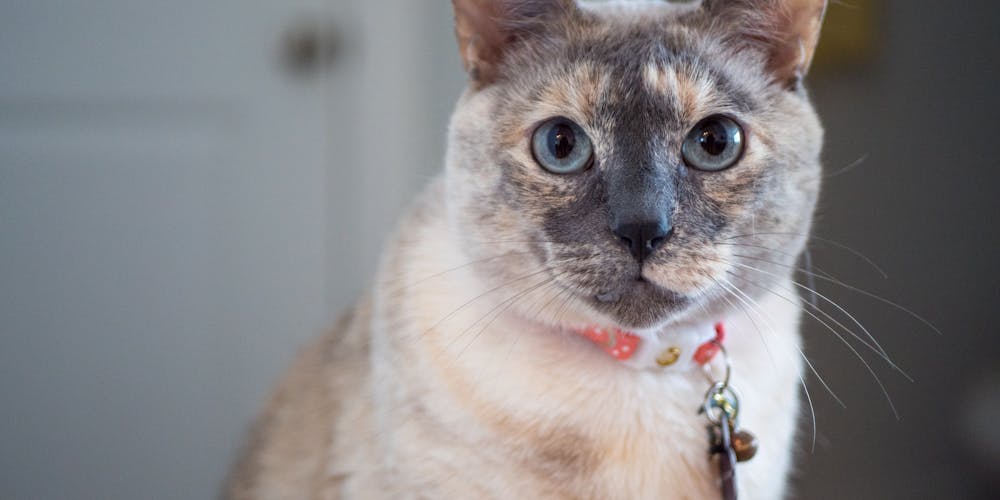
Feline Asthma is a chronic inflammatory condition that affects the airways in cats. It occurs when the small bronchi (the tubes that carry air to and from the lungs) become narrowed due to inflammation or allergic reactions. This narrowing restricts airflow, making it difficult for your cat to breathe properly. Symptoms may range from mild to severe, and if left untreated, feline asthma can lead to serious complications, including respiratory failure or even death.
Understanding Feline Asthma begins with recognizing that it can manifest in various ways, depending on the severity of the condition. The symptoms may not always be evident at first, which makes awareness crucial for early detection and treatment.
The Nature of Feline Asthma
Feline asthma shares similarities with asthma in humans. It is characterized by episodes of wheezing, coughing, and difficulty breathing, often triggered by allergens or irritants. Cats affected by asthma may exhibit distress during an episode, leading to increased heart rate and anxiety.
The condition can develop in cats of any age but is more common among older cats. Certain breeds, such as Siamese and Himalayan, may have a higher predisposition to developing asthma. Understanding these nuances can help cat owners better anticipate potential health issues and seek timely veterinary intervention.
The Impact of Feline Asthma on Cats
The implications of untreated Feline Asthma extend beyond mere discomfort. Chronic inflammation can damage lung tissues over time, leading to permanent impairment of respiratory function.
Moreover, cats suffering from asthma may experience reduced quality of life. Activities such as playing, exploring, or simply lounging become challenging when every breath counts. Pet owners must remain vigilant to ensure their furry companions receive the necessary care and attention they deserve.
Causes of Feline Asthma
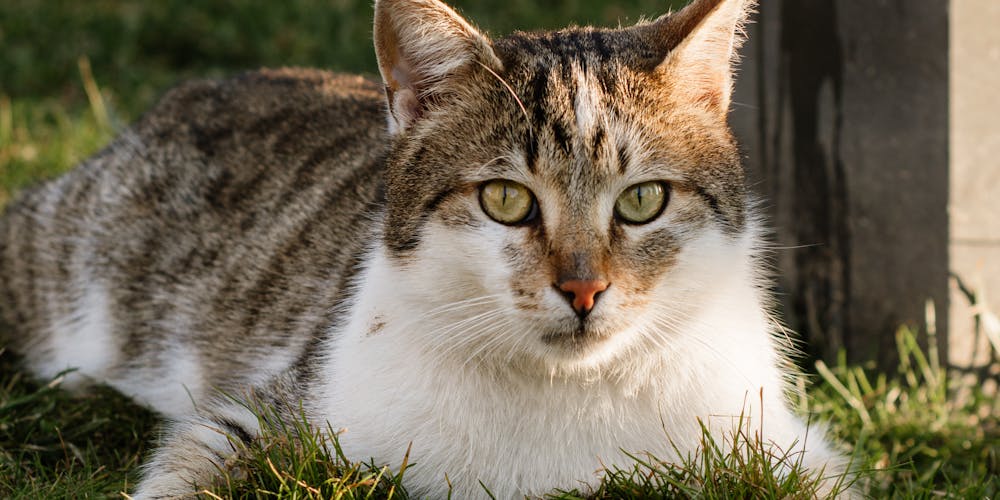
Numerous factors contribute to the development of asthma in cats. Identifying these triggers can empower pet owners to reduce exposure and effectively manage the condition. Here, we explore some primary causes behind Feline Asthma.
Allergens and Irritants
Cats are sensitive creatures, particularly to environmental factors. Common allergens include dust, pollen, cigarette smoke, mold, and strong scents from cleaning products or perfumes. Exposure to these irritants can exacerbate asthmatic conditions, resulting in intense coughing, wheezing, and labored breathing.
As a pet owner, it’s essential to maintain a clean, allergen-free environment. Regular cleaning, using air purifiers, and avoiding smoking indoors can help mitigate exposure to harmful substances that could trigger asthma attacks.
Parasitic Infections
Parasitic infections are another significant factor contributing to the onset of asthma in cats. Parasites such as worms or fleas can lead to respiratory issues, exacerbating underlying asthma conditions. Keeping your cat on a proper parasite prevention regimen is vital in reducing the risk of asthma flare-ups.
Stress and Obesity
Stressful situations can be detrimental to a cat’s overall health. Situations like moving house, introducing new pets, or loud noises can trigger stress-induced asthma attacks. Additionally, obesity can further complicate the situation, making it harder for a cat to breathe comfortably.
Combating stress through engaging playtime, a consistent routine, and creating a calm environment can promote better respiratory health. Likewise, maintaining a healthy weight through nutritious diet and exercise is critical for managing Feline Asthma.
Mechanism Behind Feline Asthma

To fully grasp the nature of Feline Asthma, it’s crucial to understand the underlying mechanisms that trigger attacks. Various physiological processes play a role in the onset of asthma episodes in cats.
Bronchoconstriction
Bronchoconstriction refers to the tightening of the muscles surrounding the bronchi, leading to restricted airflow. In asthmatic cats, exposure to allergens or irritants can trigger this response, making it difficult for them to breathe. While this response is part of the body’s defense mechanism, excessive bronchoconstriction results in significant breathing difficulties.
Mucous Production
Another contributing factor to Feline Asthma involves the excessive production of mucus in the airways. When inflammation occurs, the lining of the bronchi becomes swollen and produces additional mucus, which further obstructs airflow.
Managing mucus production is essential in treating Cat Breathing Problems. Veterinary interventions often focus on both reducing inflammation and clearing excess mucus to restore normal breathing patterns.
Hyperreactivity of Airways
Asthmatic cats often display hyperreactive airways, meaning their respiratory systems overreact to various stimuli. Factors like changes in temperature, humidity, or even physical exertion can provoke asthma attacks.
Understanding this hyperreactivity helps pet owners identify potential triggers and create a supportive environment that minimizes stressors.
Signs Your Cat May Have Asthma

Recognizing the signs of Feline Asthma is vital for prompt treatment and care. As a pet owner, being aware of the symptoms can facilitate swift veterinary intervention when needed.
Coughing and Wheezing
Persistent coughing and wheezing are among the most noticeable signs of Cat Asthma. If your cat coughs intermittently, particularly during play or while resting, it may indicate an underlying respiratory condition. Wheezing sounds, characterized by a whistling or raspy noise during exhalation, should also raise concern.
Difficulty Breathing
Labored breathing may present itself as rapid chest movements, extended necks, or open-mouthed breathing. If you observe your cat in a hunched position with noticeable effort to inhale or exhale, it may signify a severe asthma episode requiring immediate veterinary assistance.
Lethargy and Disinterest
Asthmatic cats often exhibit lethargy and reluctance to engage in their usual activities. You may notice your cat lying down more frequently or avoiding playtime altogether. If your feline friend seems disinterested or weak, it may indicate a respiratory issue that warrants a vet visit.
Levels of Severity in Feline Asthma

Understanding the severity levels of Feline Asthma can assist pet owners in identifying the right course of action.
Mild Symptoms
Mild cases of asthma may involve occasional coughing or wheezing without affecting your cat's daily life significantly. These symptoms might not occur daily, and the cat generally appears healthy otherwise. However, even mild symptoms should not be ignored, as they can worsen if left unaddressed.
Moderate Symptoms
In moderate cases, symptoms become more frequent, leading to discomfort or noticeable distress during breathing. Cats may exhibit signs of fatigue or decreased appetite, impacting their quality of life.
Regular vet check-ups and potential lifestyle adjustments are vital in managing moderate symptoms effectively.
Severe Symptoms
Severe Feline Asthma is marked by persistent coughing, wheezing, and difficulty breathing. Cats may struggle to catch their breath, leading to hypoxia (lack of oxygen). This level of severity can pose life-threatening risks and requires urgent medical attention.
If any severe symptoms are observed, contacting a veterinarian immediately is crucial to prevent further complications.
Diagnosing Feline Asthma
.jpg)
Accurate diagnosis of Feline Asthma is paramount in determining the appropriate treatment plan. Various tests and examinations can aid in establishing a definitive diagnosis.
Physical Examination
A thorough physical examination performed by a veterinarian is typically the first step in diagnosing feline asthma. During this process, the vet will listen to your cat's breathing patterns and assess for any abnormal sounds, like wheezing or crackles.
Additionally, observing the cat's overall health, behavior, and respiratory rate provides important context for potential respiratory issues.
Imaging Techniques
Radiographic imaging, such as X-rays, is often employed to evaluate the lung structure and identify any abnormalities. X-rays can reveal signs of bronchial inflammation or other respiratory conditions.
These imaging techniques provide invaluable insights into the presence and severity of asthma in your cat.
Laboratory Testing
Blood tests may also be conducted to identify underlying health issues contributing to asthma or to rule out other potential conditions. For instance, testing can determine whether parasitic infections are at play, which could complicate the cat’s respiratory status.
Treatment Options for Feline Asthma
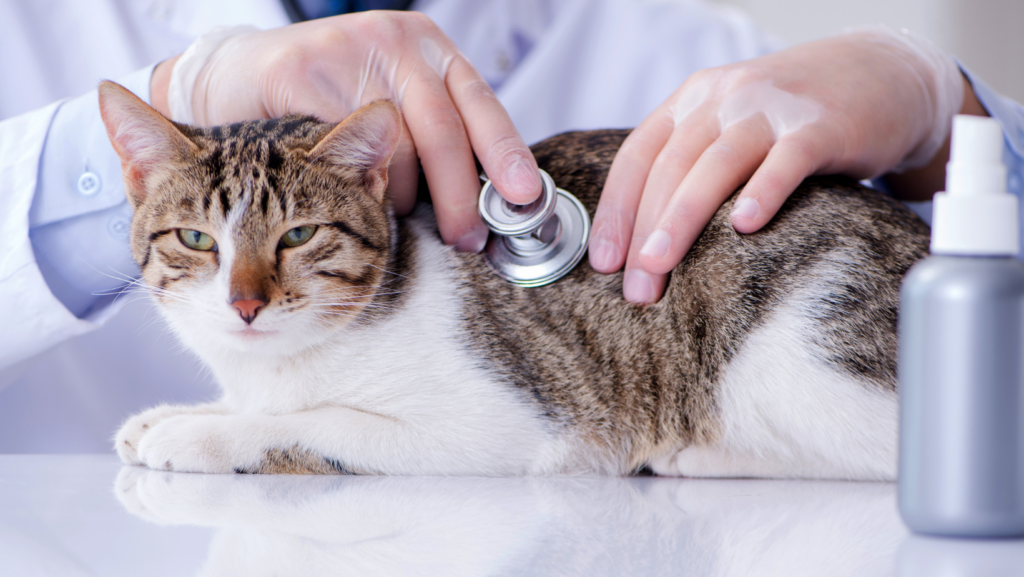
Treating Feline Asthma effectively requires a multifaceted approach, focusing on reducing airway inflammation and improving airflow. Various treatment options are available based on the severity of the condition.
Corticosteroids
Corticosteroids are a common and effective treatment option for managing asthma symptoms in cats. These medications work to reduce inflammation within the airways, thereby easing breathing difficulties.
Veterinarians may prescribe corticosteroids in oral or injectable forms, depending on the individual cat’s needs. While corticosteroids can positively impact the symptoms of Cat Respiratory Issues, close monitoring is essential to minimize potential side effects.
Bronchodilators
Bronchodilators are medications aimed at relaxing the muscles surrounding the airways, allowing for improved airflow. This class of drugs is helpful in acute situations or as adjunct therapy in chronic asthma management.
Although bronchodilators ease symptoms, it’s vital to note that they do not address the underlying inflammation and should be used alongside anti-inflammatory treatments.
Lifestyle Adjustments
In addition to medications, lifestyle modifications can significantly support your cat’s respiratory health. Creating a low-stress environment, minimizing exposure to allergens, and ensuring regular vet check-ups are crucial components of effective asthma management.
Consider implementing air purification systems, maintaining a consistent indoor humidity level, and establishing a smoke-free home as proactive steps toward preventing asthma flare-ups.
Can Feline Asthma Be Transmitted to Humans?
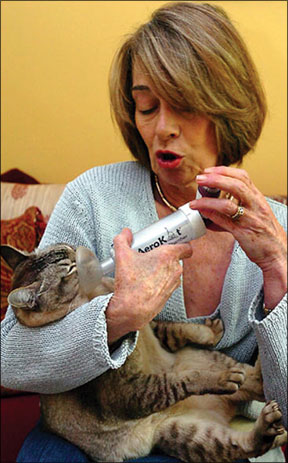
A common concern among pet owners revolves around the potential transmission of Feline Asthma to humans. Fortunately, asthma is not contagious; thus, it cannot be passed from cats to humans.
However, individuals with existing respiratory conditions or allergies may be more susceptible to triggers associated with feline asthma, such as dander or hair. Maintaining good hygiene standards, including regular grooming and cleaning, can minimize exposure and alleviate concerns.
Preventing Asthma in Cats
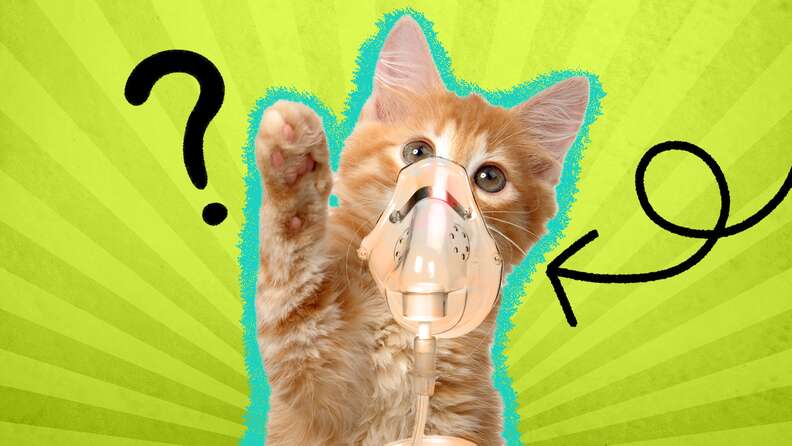
Preventing Feline Asthma involves several proactive measures aimed at reducing exposure to known triggers and promoting overall health.
Regular Veterinary Check-Ups
Routine vet visits allow for early detection and management of any potential health issues. Discussing any behavioral changes or respiratory concerns with your veterinarian ensures timely intervention and tailored treatment plans.
Maintain a Clean Environment
Creating a clean living space is imperative for minimizing allergens. Frequent vacuuming, using air purifiers, and eliminating smoking indoors can all contribute to a healthier environment for your cat.
Promote Healthy Habits
Encouraging regular exercise and feeding a balanced diet helps maintain a healthy weight for your cat. Weight management plays a vital role in respiratory health, as overweight cats face greater challenges regarding breathing.
Conclusion
Understanding Feline Asthma is vital for every cat owner. By recognizing the symptoms, knowing the causes, and seeking prompt veterinary care, you can ensure a healthier life for your feline companion. Remember, proactive measures, coupled with an awareness of your cat's needs, will go a long way in managing this chronic condition.
Being informed allows you to nurture your relationship with your beloved pet while safeguarding their health and well-being. Always consult with a professional for personalized advice and treatment options tailored specifically for your cat’s unique needs.
By staying alert and engaged, you can make a profound difference in the quality of life for cats living with asthma.
0 comment
Be the first to comment